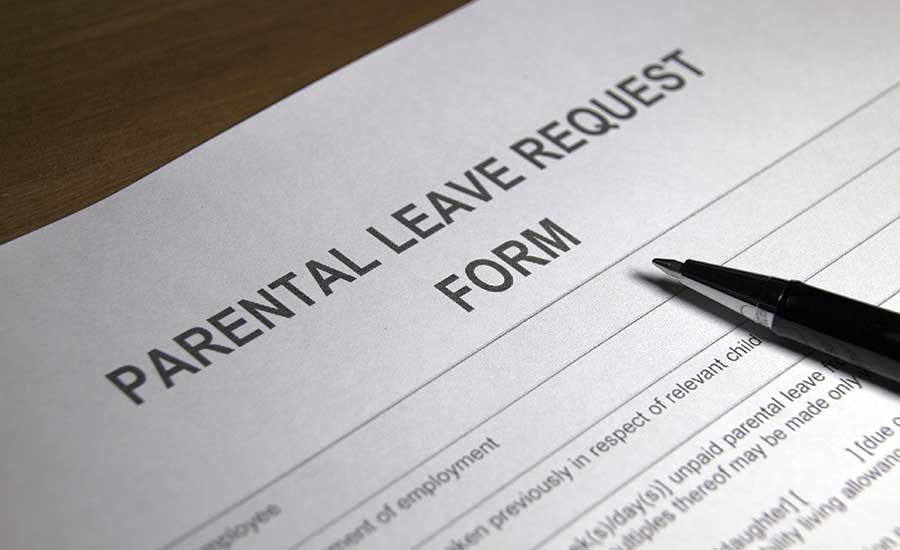Trump Pushes Paid Parental Leave Policy
Employers should start to prepare now so they're ready for any new changes to federal laws.




President Donald Trump announced his intention to work on making childcare more accessible in a bi-partisan fashion during his first address before a joint session of congress. It signals a substantial shift in paid leave in the United States.
During the presidential campaign, Trump made maternity leave a signature issue. Now that he’s in the White House, he appears intent on pursuing paid leave for new parents who don’t receive time off from their employers.
During Trump’s February meeting with Canadian Prime Minister Justin Trudeau, the two leaders discussed challenges facing women in the workforce and announced the creation of the United States-Canada Council for Advancement of Women Entrepreneurs and Business Leaders. According to a joint statement issued by the White House, “It is a priority of both countries to ensure equal opportunities for women in the workforce. We are committed to removing barriers to women’s participation in the business community and supporting women as they advance through it.”
Trump originally announced a plan to implement maternity leave last September. His plan, created with the input of his oldest daughter Ivanka, includes six weeks of paid maternity leave for women whose companies don’t offer paid time off. Trump’s first joint speech to congress may indicate that the plan will also apply to all new parents, but he has yet to reveal a formal proposal with this change.
With Trump’s renewed emphasis on the issue, employers should start to prepare now so they’re ready for any new changes to federal laws.
Federal and State Laws that Impact Maternity Leave
Currently, there are no federal laws that require paid maternity leave in the United States. However, there are several laws that impact pregnant employees, new parents and their employers. Under the Family and Medical Leave Act (FMLA), eligible employees can take up to 12 workweeks of job-protected unpaid leave for the birth or adoption of a son or daughter or to bond with a newborn or newly placed adopted son or daughter.
The Pregnancy Discrimination Act, an amendment to Title VII of the Civil Rights Act of 1964, makes it illegal to discriminate against women based on pregnancy or related conditions.
Under Section 7 of the Fair Labor Standards Act, employers must provide reasonable break time for an employee to express breast milk for her nursing child for one year after the child’s birth. Employers must also provide a place for nursing mothers, other than a bathroom, that’s shielded from view and free from intrusion from coworkers and the public.
Currently only California, New Jersey, and Rhode Island provide some paid family leave to new parents. New York has similar legislation that will take effect in 2018. Other states, such as Oregon and Maine, provide unpaid leave for those who aren’t eligible to take time off under FMLA.
Moreover, five states and the District of Columbia require employers to allow workers to earn paid sick days that can be used to care for a spouse or partner recovering from childbirth. Arizona and Washington will join these states on July 1 and Jan. 1, 2018, respectively. Some states, such as Hawaii, entitle women to temporary disability insurance if they’re unable to work while pregnant.
Last year, San Francisco passed what’s been called the most generous maternity leave policy in the country. The law builds on California’s paid parental leave law and provides all new parents with 100 percent paid leave for six weeks. It took effect on Jan. 1 for companies with more than 50 employees. Next year, companies with 20 or more workers will need to comply.
A New Push for National Paid Parental Leave
Trump hasn’t yet submitted a proposal for paid parental leave to congress. Before the inauguration in January, members of Trump’s transition team held a conference call with staff members of the House of Representatives’ Ways and Means Committee to discuss a plan, according to media reports. The plan Trump announced during his campaign guaranteed six weeks of paid maternity leave for mothers who have given birth and who don’t receive paid time off from their employers. It didn’t extend paid leave to fathers or adoptive mothers. According to a report from CNN, the proposal will be part of a broader tax reform package that would cost $300 billion.
Whether the Republican majority in congress will be eager to pass Trump’s proposal remains to be seen. When Barack Obama called for laws offering paid maternity and sick leave in his 2015 State of the Union address, congress failed to pass any legislation.
Next Steps
While the situation regarding paid maternity leave remains unsettled, employers should take several steps so they’re prepared for any new laws.
Stay on top of new proposals.
Employers should proactively monitor any proposed legislation at the federal and state levels. Business associations, HR staff, in-house counsel and law firm attorneys should be regularly consulted, so employers are not blind-sided by the regulatory or financial fallout of any new laws.
Comply with current laws.
With the current patchwork of federal, state and local laws governing time off for new parents, now’s an excellent time for organizations to work with HR and legal counsel to review their current policies and procedures and make sure they’re in compliance. By ensuring they’re currently up-to-date, it’ll be easier to adapt to any new laws that may emerge. This is particularly true for companies that operate in multiple states or those in states where new laws will soon take effect, such as New York.
Consider refresher training and updates.
With the topic of paid parental leave in the news, employees may be wondering about laws and rules that impact them. This is a good opportunity to communicate with employees and provide extra training to supervisors and managers, so everyone understands the company’s policies and expectations.
As the Trump administration pushes for sweeping changes in the regulatory landscape, including parental leave, employers should start planning. Working with knowledgeable professionals now will help lay the groundwork for changes that could significantly impact employers and their workers.
Looking for a reprint of this article?
From high-res PDFs to custom plaques, order your copy today!




.jpg?height=200&t=1633011909&width=200)
.jpg?height=200&t=1612209299&width=200)


